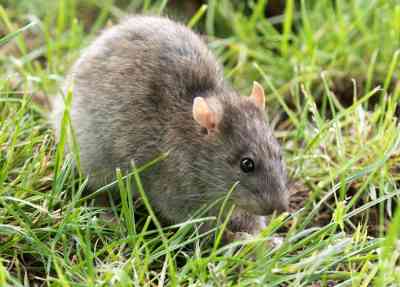New York City is hailed as the city of dreams. It’s a place where people go to make it big, chase their ambitions, and live their best life. However, beneath the bustling metropolis, there’s a side to the city that isn’t as attractive. Thousands of rats call New York City subways home. These pesky rats have become a symbol of the city’s oldest and largest rapid transit systems.
Table of Contents
In this article, we’ll explore the world of New Yorks Subway Rats and shed some light on where they originate, what causes their surge in numbers, and how to stay safe when you encounter one. So buckle up as we take a deep dive into the underground world of New York City’s subway rats.
Key Points
- The New York City subway rats display exceptional traits that suit their underground habitat, making them a captivating yet contentious subject. Their cleverness, adaptability, and impressive climbing skills are noteworthy.
- In the New York City subway system, two prevalent rat species are the brown (Norway) rats and black rats.
- Given that rats can spread diseases through their urine, feces, and saliva, maintaining proper sanitation and implementing pest control measures becomes crucial.
- To prevent rat-related issues, sealing entry points, ensuring proper food storage, and maintaining regular cleaning practices are essential steps.
- For eco-friendly rat management, humane trapping techniques, entry point sealing, and the use of natural repellents can be employed effectively.

Introducing the Subway Rats of New York City
New York City is known for many things, from the towering skyscrapers of Manhattan to the world-famous pizza of Brooklyn. But one of the most unusual and fascinating aspects of the city is its community of subway rats. These fuzzy little creatures have adapted perfectly to life in the city’s vast network of underground tunnels and stations, using their agility and intelligence to navigate the complicated maze.
However, not everyone is a fan of the subway rats, and there are those who believe that they should be removed. On the other hand, supporters of the rats argue that they play an important role in the city’s ecosystem. Regardless of where you stand on the issue, there’s no denying that the subway rats of New York City are a unique and fascinating phenomenon that deserves to be appreciated.
History of the Subway Rats of New York City
The busy streets of New York City may be bustling with people, but the city’s underground subway system tells a different story. It’s a world inhabited by rats – lots and lots of them. While these furry critters have been part of the city’s landscape since the 18th century, it wasn’t until the construction of the first subway line in 1904 that they truly took over.
Previously, rats were mainly confined to the docks and piers, but the underground tunnels and stations of the subway system provided them with a vast new habitat to explore. And with the subway offering a constant source of food, water, and shelter, it’s no surprise that it has played a significant role in fueling New York’s rat population.
Behaviors
Subway rats may not be the most popular creatures living underneath our feet, but they certainly have some impressive talents. These rodents display remarkable intelligence and adaptability, thanks to their evolved behaviors that have allowed them to thrive in the subterranean environment. One of the many impressive traits that these rats have developed is their incredible sense of smell.
Their keen noses can easily detect food sources from even great distances. Additionally, subway rats have proven to be excellent climbers, navigating walls and ceilings with ease. While these critters are primarily nocturnal, it’s not uncommon to spot them during daylight hours. All in all, these rats are truly impressive creatures that have worked hard to make subterranean life work for them.
The New York City subway houses two common rat types – the brown (Norway) rats and the black rats. Among these, the brown rats are more abundant and larger, with a typical lifespan of up to three years. In contrast, black rats are smaller, less frequently seen, and have a lifespan of up to two years.
Both subway rats and pigeons act as carriers of diseases, underscoring the importance of exercising caution when encountering them in the subway environment.
The subway rats in New York City are remarkable creatures, well-adapted to the underground transit system they call home. Understanding their history, behaviours, and distinct characteristics can help us take necessary precautions and gain a deeper appreciation for their role in the city’s ecosystem.
Exploring the Environmental Causes of the Rat Infestation in NYC’s Underground
New York City’s underground transport system is a marvel of engineering, connecting millions of residents and visitors every day in this bustling metropolis. However, the city’s incredible growth has led to an unintended consequence: a rising rat population in its underground tunnels and subways.
These rodents thrive in the warm, dark, and humid conditions of the underground environment, and the abundance of food waste from restaurants and street vendors only adds to their numbers. To ensure the safety and hygiene of the city’s public transportation system, it is imperative to identify and address the environmental factors that attract rats and allow them to breed. Otherwise, New Yorkers will have to contend with an ever-growing rat problem that could pose a danger to commuters and visitors alike.
Common Misconceptions About Rats and Why They Are Helpful To Humans
When we think of rats, we often conjure up images of disease and squalor. However, despite this negative association, rats actually possess several beneficial qualities that make them advantageous to humans. In New York City, where their population is abundant, many locals revile these rodents as nothing more than pests. Yet, researchers have debunked several myths surrounding rats.
Contrary to popular belief, not all rats carry diseases. In fact, only a small number of species transmit diseases to humans. Furthermore, rats are skilled scavengers, which means they help to maintain the cleanliness of the city by consuming large amounts of garbage.
Their role as scavengers also makes them an essential part of various ecosystems, as they play a key role in the food chain. While rats may not be the most popular animals around, their positive impact on our environment and society should not be overlooked.
Health Hazards Associated with Human-Rat Interactions
New York City is a hub of cultural richness, delectable food, and endless entertainment. There is always something happening in the city that never sleeps. But, amidst the hustle and bustle, it is important to keep in mind the health risks posed by the city’s rodent population. Rats are notorious for being carriers of harmful diseases such as leptospirosis, rat-bite fever, and salmonella.
These infections can be transmitted via contact with rat urine, faeces, and saliva. Therefore, it is crucial to take up proper measures such as sanitation protocols, construction efforts, and pest control mechanisms to considerably reduce the risk of exposure to the aforementioned diseases. By being mindful of the dangers of rats and adopting necessary safety measures, we can ensure that our health and well-being are safeguarded in this vibrant city.
How To Prevent Rat Infestations Around Your Home Or Business
The issue of rat infestations is prevalent in New York City due to its densely populated and urban setting. As we’ve established, these pests can wreak havoc on property, transmit dangerous diseases, and contribute to overall uncleanliness. Therefore, it is crucial to implement preventive measures to keep your home or business rat-free.
Here are some effective methods to achieve this:
- Seal any cracks or holes in the walls and foundation of your property, as these serve as entry points for rats.
- Ensure that food is properly stored and packed away in rat-proof containers to prevent attracting them.
- Eliminate potential nesting sites by keeping cluttered areas and overgrown vegetation in check.
- Regularly clean up any trash or debris around your property, as rats are attracted to food sources.
By diligently following these steps, you can significantly reduce the likelihood of rat infestations around your home or business, creating a safe and clean environment for everyone.
Tips For Dealing With a Rat Problem – Humane Ways to Trap and Remove Them
Living in New York can be an exciting and vibrant experience, where the urban landscape is alive with a variety of creatures, including rats. Although dealing with a rat infestation is no one’s idea of fun, it’s important to handle the situation humanely. Live traps with one-way doors provide a safe and nonviolent option for trapping and removing rats.
Sealing off any potential entry points around your home or building is also critical to prevent further rats from entering. Using natural repellents like peppermint or mothballs in affected areas can also deter rats from returning, making it a more eco-friendly way to handle a rat problem.
Taking these steps can help manage and resolve a rat problem in a way that is kind to both the rats and the environment.

FAQs
How big do NYC Subway rats get?
While it’s difficult to determine an exact size, reports suggest that some subway rats can grow up to a foot long, not including their tails. These rats have adapted to their environment and can be found scurrying around subway tracks, stealing snacks from unsuspecting passengers.
Who is the rat czar of New York City?
With over 8 million people and a seemingly infinite number of rats, it’s not an easy task to control the rat population in the city. The rat czar is responsible for managing the various programs and initiatives aimed at reducing the number of rats on the streets and in the subways. From monitoring rat activity to deploying teams to exterminate them, the rat czar of NYC has a daunting task.
Do NYC rats carry COVID?
While research on the transmission of the virus via rats is still limited, there is some evidence to suggest that it’s possible. According to a recent study in China, rats can indeed test positive for the virus and potentially spread it to humans.
Final Words
Rats in New York City are a common sight and have been for years. From apartments to subway stations, rats can be found pretty much anywhere in the city. Despite many efforts to eliminate them, these creatures have become a symbol of the city’s oldest transportation system and are likely to stick around for a while. While it’s true that rats can be difficult to deal with, understanding how to protect yourself when you encounter one is crucial.
There are multiple ways to do this, including discouraging these pests from near homes or offices, keeping a close eye on your surroundings, disposing of food waste properly, and seeking professional help if necessary. All of these precautions can help keep you safe from these pesky rodents.
Reference:
- https://rattrapinc.com/new-york-city-rat-facts
- https://www.nyc.gov/office-of-the-mayor/news/249-23/mayor-adams-anoints-kathleen-corradi-nyc-s-first-ever-rat-czar-#
- https://asm.org/Press-Releases/2023/March/Study-Shows-New-York-City-Rats-Carry-SARS-CoV-2

Rahul M Suresh
Visiting the Zoo can be an exciting and educational experience for all involved. As a guide, I have the privilege of helping students and visitors alike to appreciate these animals in their natural habitat as well as introducing them to the various aspects of zoo life. I provide detailed information about the individual animals and their habitats, giving visitors an opportunity to understand each one more fully and appreciate them in a more intimate way.









